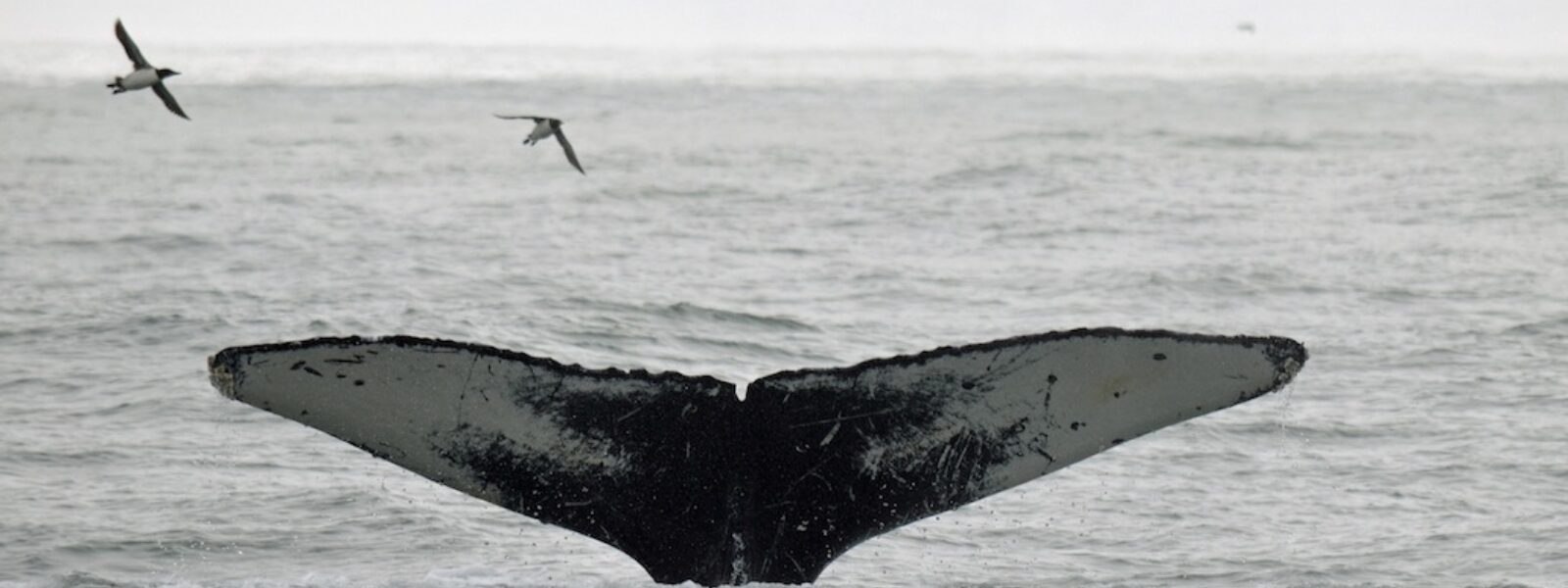

The Trump Administration is reviewing eleven major National Marine Sanctuaries and National Marine Monuments for potential shrinkage to open up more marine areas to offshore oil drilling. The review, conducted by the Secretary of Commerce, includes four sanctuaries off the coast of California, several in New England, the South Pacific and one in the Great Lakes. These areas were designated by previous Presidents, including Republican Presidents, due to their important ecological diversity and value for fishing grounds and recreation.
But President Trump signaled early on in his Presidential campaign that he strongly supported increased drilling for oil in the United States. Despite the dangers of global warming from burning oil and massive oil spills from oil wells, the sanctuaries, which ban oil drilling, are being reviewed solely for their oil and gas potential.
In fact, the possibility of offshore oil drilling was reviewed when these sanctuaries were originally designated over the years. Very few have much oil and gas potential, compared to the Gulf of Mexico, for example. Furthermore, sea conditions tend to be more extreme in these sanctuaries, raising the risk of oil spills and other accidents.
Oil exploration requires extremely loud noises by shooting off air guns into the water column to map out potential oil bearing rocks from the echoes off the layers of earth. Marine mammals in particular are sensitive to loud underwater noise, which can lead to ear damage and death of cetaceans. Oil drilling also comes with loud mechanical noise, and uses a number of toxic materials in drilling muds that are dumped into the ocean after use. Small oil spills tend to be routine, especially in transferring oil to surface vessels for transport to land for processing.
California waters have been drilled for years, resulting in the massive 1969 oil spill when a well blew out that tarred beaches of Santa Barbara with an estimated 3 million gallons of oil and helped lead to the growth of the modern environmental movement.
The expansions of these sanctuaries conducted over the last ten years that are under review include the Channel Islands National Marine Sanctuary situated off the southern California coast and encompassing the waters around the Channel Islands; the large Monterey Bay National Marine Sanctuary that includes the Big Sur coast up to and including Monterey Bay; the Greater Farallones National Marine Sanctuary that encompasses the Farallon Islands (largest US bird rookery outside of Alaska), the Point Reyes Peninsula and expanded by President Obama to include much of the Sonoma County Coast; and the Cordell Bank Sanctuary protecting the rich seamounts offshore Marin and Sonoma Counties.
Also under review is the Thunder Bay National Marine Sanctuary located in Lake Huron of the Great Lakes state of Michigan, the National Marine Sanctuary of American Samoa, the Marianas Trench Marine National Monument, the Pacific Remote Islands Marine National Monument, the Papahānaumokuākea Marine National Monument of Hawaii (established by President George W. Bush and expanded by President Barack Obama), the Rose Atoll Marine National Monument in American Samoa, and New England’s Northeast Canyons and Seamounts Marine National Monument.
On April 28, 2017, President Trump signed an Executive Order requiring the Secretary of Commerce to review the Sanctuaries “in order to maintain global leadership in energy innovation, exploration, and production”.
The Trump Administration’s various actions to promote offshore oil drilling have been sharply criticized by the bi-partisan panel that looked at the impact of the 2010 Deepwater Oil Spill in the Gulf of Mexico.
In an opinion published in The New York Times, former co-chairmen of the National Commission on the BP Deepwater Horizon Oil Spill and Offshore Drilling wrote:
"In short, drilling in the outer continental shelf remains risky business. Safety and oversight in offshore drilling continues to need improvement, not roll backs," wrote William Reilly, who served as U.S. Administrator of the Environmental Protection Agency with President George H.W. Bush’s administration, and former Florida Sen. Bob Graham (D).
"President Trump's executive order disregards these facts," Reilly and Graham wrote. "It fails to account for the vulnerabilities of the ocean's frontier regions, a lack of adequate federal investment in safety measures for Arctic conditions, or the danger to coastal economies. It will put workers' lives as well as ecologically rich and economically important waters and coastlines at needless additional risk."
WHAT YOU CAN DO:
Deadline for comments is July 26th.
Please also sign our new petition to President Donald Trump: